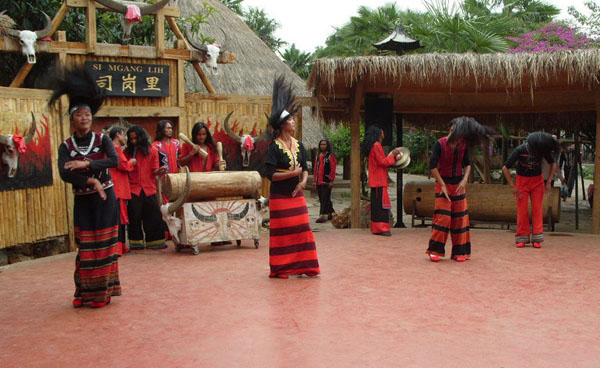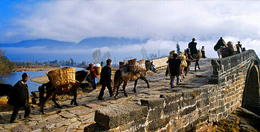
The Yi Ethnic Left-foot Dance

Overview:In 2009, 17,200 Yunnan locals took part in the left-foot dance of the Yi people, creating the Guinness World Record: the grandest dance in the world.
In 2009, 17,200 Yunnan locals took part in the left-foot dance of the Yi people, creating the Guinness World Record: the grandest dance in the world.
The left-foot dance
With a history of more than 1,000 years, Mouding County's Yi ethnic left-foot dance is a living fossil of the ancient art, and it embodies the cultural elements of the Yis, such as tone of folk songs, dancing art, and traditional music.
The tune
Called "gu zhe min" in the Yi ethnic dialect, it's the dominating singing style for most of the mass activities. There is no restriction on the age or gender, and the way of singing varies from solo, chorus, and antiphon to accompaniment.
It offers audience feelings of roughness, earnestness, and wildness. What the left-foot songs expresses includes love, eulogy, narration, scorching, humour, exhorting, educating, and wine etiquettes etc. The number of songs totals at least 300 in the whole county of Mouding, and these folk songs are deemed the quintessence of the Yi ethnic culture.
The dance
The left-foot dance is highlighted by those of two Yi ethnic branches: Lipo and Luoluopo.
Locally called "ma gu" by the Lipos, the dance is most of the time staged by people aged between 40 and 80; and as its name implies, "ma gu” is the “dance for the old". The "ma gu" is always accompanied by Sanhu (three-stringed instrument similar to a Chinese fiddle).
The dance is quaint, elegant, and serene, and it has its own rules: young people dance only after old people kick off, and the Yueqin instrument is played only after the Sanhu is played. In other words, the merit of filial piety of the Yis has been imperceptibly kept by staging the dance.
For the Luoluopo, however, the dance is called "gu zhe" in the Yi ethnic dialect, meaning "dancing". It is staged at celebrations, festivals, weddings, and as entertaining events in the slack season of farming.
Generally speaking, the steps of left-foot dance change to the tone of the songs, "one tone, one style of dancing". Since Mouding has at least 300 tones for left-foot dance, there should be equivalently 300 dancing styles, abundant enough for people to master for decades.
The music
The main musical instruments played for left-foot dance are Yi ethnic fiddles, sometimes accompanied by flutes, trumpets, and tree leaves. Among the fiddles, the four-stringed dragon-headed one is indispensable.
Top Yunnan Tours
- 16-day Beijing Xian Yunnan Kunming Dali Lijiang Shangrila Chengdu Tour
- 15-day Chengdu Yunnan Chongqi Yangtze Shanghai Tour
- 18-day Shanghai Hangzhou Xian Chengdu Yunnan Guilin Hong Kong Tour
- 6-day Join-in Yunnan Small Group Tour
- 9-day Yunnan Dianhong Red Tea & Pu'er Tea Tour
- 7-day Yunnan Kunming Jianshui Yuanyang Photography Tour


